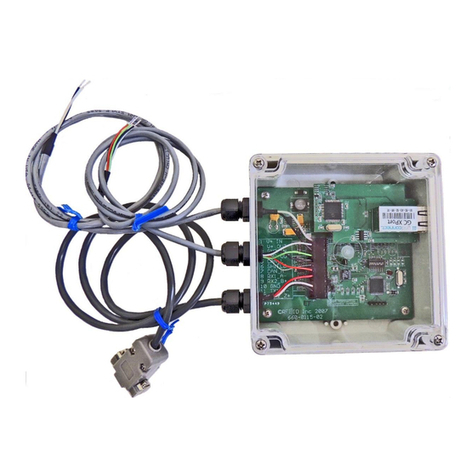
4
1.2 DESCRIPTION
The Model 4000 and 5000 provides a half-duplex asynchronous bit serial data stream that will
interface to equipment compatible with RS-232-C specifications. The Reader/Interface is
configured as Data Terminal Equipment (DTE). The Model 4000 Reader/Interface provides an
excitation signal to an external Antenna to electro-magnetically power a passive Tag, otherwise
known as a Transponder or Label. The response from the Tag is sensed, amplified, filtered and
demodulated by the Reader/Interface to determine the data stored in the Tag. The unit operates
with many differing Antenna styles available from RFID, Inc.
The Reader/Interface contains circuitry to process Tag information as contained in the RFID,
Inc. family of Tags. An error detection algorithm provides error free operation. All messages
are transmitted in printable ASCII characters.
The Model 4000 operates as both a transmitter and receiver of RF signals. The unit provides a
low frequency electromagnetic field at 148 KHz to activate an RFID, Inc. tag in the vicinity of
the Antenna/Read Head field. Once the Tag is energized, it modulates the field in accordance
with data contained in the Tag’s eeprom chip. Receiving a return signal of 37 KHz from the
Tag, the unit processes this information and relays it for use by a host computer, process
controller or display and storage device. In addition to all of the above, the Model 5000 has the
ability to send a re-programming message that updates or changes the Tag’s programmed data.
1.3 SPECIFICATIONS
Communication Protocol: Half-Duplex, DTE, RS-232-C
Signal Lines: TxD, RxD, CTS, RTS
Data Transfer Rate: 1200-19200 baud
Data Format: 8 bits, 1 stop bit, no parity
Processing Speed: 8 Character Models 23.4 ms @ 9600 baud
16 Character Models 46.7 ms @ 9600 baud
32 Character Models 93.4 ms @ 9600 baud
Error Rate: Less than 1 in 100,000,000,000,000 readings
Connectors: Antenna: Angle entry terminal strip
Power and Data: 12 contact Locking header, 0.1” centers
Valid Read Output: 2 contact Locking header, 0.1” centers
Read Distance: Up to 36” (Tag and Antenna dependent)
Write Distance: Planar coil Tags, nearly 98% of read range
Ferrite coil Tags (Tag Model ending in an “M”) 60% of read range
Operating Frequency: 148 KHz (transmit) 37 KHz (receive)




























